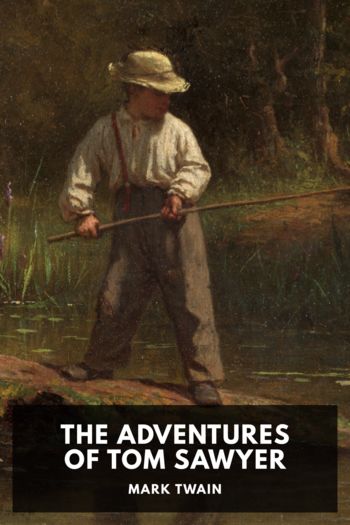The Autobiography of Mark Twain by Mark Twain (good book recommendations .TXT) 📕

Description
The Autobiography of Mark Twain is a collection of reminiscences and reflections. Twain began dictating them in 1870, and in 1906 he published Chapters from My Autobiography in twenty-five installments in the North American Review. He continued to write stories for his autobiography, most of which weren’t published in his lifetime due to a lack of access to his papers, or their private subject matters. After Twain’s death, numerous editors have tried to organize this collection of published and unpublished autobiographical works, producing various differing editions. The most recent attempt is by the Mark Twain Project at the University of California, Berkeley, which published a three-volume edition; but, through what many consider legal trickery, the University of California, Berkeley has claimed copyright on that edition until 2047—137 years after Twain’s death.
This Standard Ebooks production is based on Harper and Brothers’ 1924 collection, compiled by Albert Bigelow Paine.
Read free book «The Autobiography of Mark Twain by Mark Twain (good book recommendations .TXT) 📕» - read online or download for free at americanlibrarybooks.com
- Author: Mark Twain
Read book online «The Autobiography of Mark Twain by Mark Twain (good book recommendations .TXT) 📕». Author - Mark Twain
Beecher, Gough, Nasby, and Anna Dickinson were the only lecturers who knew their own value and exacted it. In towns their fee was $200 and $250; in cities, $400. The lyceum always got a profit out of these four (weather permitting), but generally lost it again on the house-emptiers.
There were two women who should have been house-emptiers—Olive Logan and Kate Field—but during a season or two they were not. They charged $100, and were recognized house-fillers for certainly two years. After that they were capable emptiers and were presently shelved. Kate Field had made a wide, spasmodic notoriety in 1867 by some letters which she sent from Boston—by telegraph—to the Tribune about Dickens’s readings there in the beginning of his triumphant American tour. The letters were a frenzy of praise—praise which approached idolatry—and this was the right and welcome key to strike, for the country was itself in a frenzy of enthusiasm about Dickens. Then the idea of telegraphing a newspaper letter was new and astonishing, and the wonder of it was in everyone’s mouth. Kate Field became a celebrity at once. By and by she went on the platform; but two or three years had elapsed and her subject—Dickens—had now lost its freshness and its interest. For a while people went to see her, because of her name; but her lecture was poor and her delivery repellently artificial; consequently, when the country’s desire to look at her had been appeased, the platform forsook her.
She was a good creature, and the acquisition of a perishable and fleeting notoriety was the disaster of her life. To her it was infinitely precious, and she tried hard, in various ways, during more than a quarter of a century, to keep a semblance of life in it, but her efforts were but moderately successful. She died in the Sandwich Islands, regretted by her friends and forgotten of the world.
Olive Logan’s notoriety grew out of—only the initiated knew what. Apparently it was a manufactured notoriety, not an earned one. She did write and publish little things in newspapers and obscure periodicals, but there was no talent in them, and nothing resembling it. In a century they would not have made her known. Her name was really built up out of newspaper paragraphs set afloat by her husband, who was a small-salaried minor journalist. During a year or two this kind of paragraphing was persistent; one could seldom pick up a newspaper without encountering it.
It is said that Olive Logan has taken a cottage at Nahant, and will spend the summer there.
Olive Logan has set her face decidedly against the adoption of the short skirt for afternoon wear.
The report that Olive Logan will spend the coming winter in Paris is premature. She has not yet made up her mind.
Olive Logan was present at Wallack’s on Saturday evening, and was outspoken in her approval of the new piece.
Olive Logan has so far recovered from her alarming illness that if she continues to improve her physicians will cease from issuing bulletins tomorrow.
The result of this daily advertising was very curious. Olive Logan’s name was as familiar to the simple public as was that of any celebrity of the time, and people talked with interest about her doings and movements and gravely discussed her opinions. Now and then an ignorant person from the backwoods would proceed to inform himself, and then there were surprises in store for all concerned:
“Who is Olive Logan?”
The listeners were astonished to find that they couldn’t answer the question. It had never occurred to them to inquire into the matter.
“What has she done?”
The listeners were dumb again. They didn’t know. They hadn’t inquired.
“Well, then, how does she come to be celebrated?”
“Oh, it’s about something, I don’t know what. I never inquired, but I supposed everybody knew.”
For entertainment I often asked these questions myself, of people who were glibly talking about that celebrity and her doings and sayings. The questioned were surprised to find that they had been taking this fame wholly on trust and had no idea who Olive Logan was or what she had done—if anything.
On the strength of this oddly created notoriety Olive Logan went on the platform, and for at least two seasons the United States flocked to the lecture halls to look at her. She was merely a name and some rich and costly clothes, and neither of these properties had any lasting quality, though for a while they were able to command a fee of $100 a night. She dropped out of the memories of men a quarter of a century ago.
Ralph Keeler was pleasant





Comments (0)